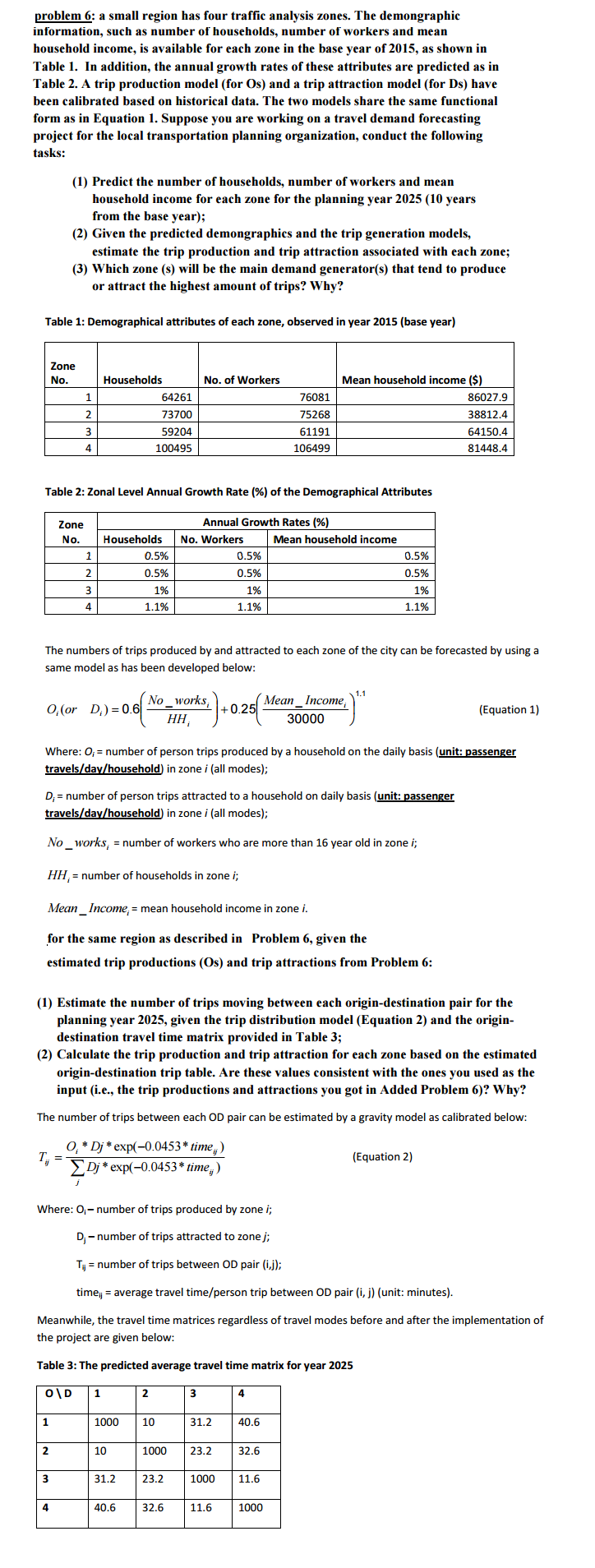

8(4), 428–438 (1976)Ĭrevo, C.C.: Impacts of zonal reconfigurations on travel demand forecasts. In: Proceedings of the 4th International Conference on Microcomputers in Transportation, Baltimore, Maryland (1992)Ĭlark, W.A.V., Avery, K.L.: Effects of data aggregation in statistical-analysis. In: Proceedings of the International Conference on Transport Survey Quality and Innovation, Grainau, Transportation Research Board (1997)Ĭhesbon, G., Cheryl, P.: Using GIS to define and develop TAZ data. 29(1), 37–52 (2002)Ĭhapleau, R.: Conducting telephone origin-destination household surveys with an integrated informational approach. In: Proceedings of the 9th Meeting of the Euro Working Group on Transportation, Bari, Italy (2002)Ĭhang, K.T., Khatib, Z., Ou, Y.M.: Effects of zoning structure and network detail on traffic demand modeling. 1429, 49–56 (1994)īinetti, M., Ciani, E.: Effects of traffic analysis zones design on transportation models. A 14(6), 795–822 (1982d)īennion, M.W., O’Neill, W.A.: Building transportation analysis zones using geographical information systems. Generalizations and large-scale applications. Two-dimensional trip distribution and location models. A 14(3), 377–405 (1982a)īatty, M., Sikdar, P.K.: Spatial aggregation in gravity models.2 One-dimensional population-density models. A 27(1), 105–119 (1995)īaass, K.G.: Design of zonal systems for aggregate transportation planning models. The results for the Lisbon Metropolitan Area case study suggest a significant improvement in OD matrix estimates compared to current transportation analysis practises based on administrative units.Īmrhein, C.G.: Searching for the elusive aggregation effect-evidence from statistical simulations. The algorithm aims to minimise the loss of information when moving from a continuous representation of the origin and destination of each trip to their discrete representations through zones, and focuses on the trade-off between the statistical precision, geographical error, and the percentage of intra-zonal trips of the resulting OD matrix. The proposed algorithm presents a new methodology for TAZ design based on a smoothed density surface of geocoded travel demand data. The results obtained are then compared to these presently used in the transportation analysis process of the Lisbon Metropolitan Area. Chacon, P.E., serves as director.This paper develops a comprehensive approach to the definition of transportation analysis zones (TAZ), and therein, presents a new methodology and algorithm for the definition of TAZ embedded in geographic information systems software, improves the base algorithm with several local algorithms, and comprehensively analyses the obtained results.
#San antonio traffic analysis zones manual#
The division develops, publishes and distributes the Texas Manual on Uniform Traffic Control Devices, which is used by all road authorities in Texas. The Traffic Safety Division also administers the Texas Traffic Safety Program, the Highway Safety Improvement Program, the Texas Highway Safety Plan, the Texas Traffic Assessment Program, and the Fatality Analysis Reporting System. The division assists and supports TxDOT districts in the research, development, and implementation of the statewide Traffic Management Systems Program designed to improve the safety and efficiency of the state highway system and provides the districts with equipment, support, and maintenance for traffic signals, intelligent transportation systems, and roadway illumination.

TRF plays a pivotal role in the Department’s constant efforts to accomplish zero fatalities on Texas roads, such as the Road to Zero program. The Traffic Safety Division (TRF) is responsible for the engineering design of traffic control devices, roadway illumination, traffic signals, the review and analysis of speed zone requests, the review of traffic engineering-related aspects of construction plans, the collection of crash records and analysis of crash data.


 0 kommentar(er)
0 kommentar(er)
